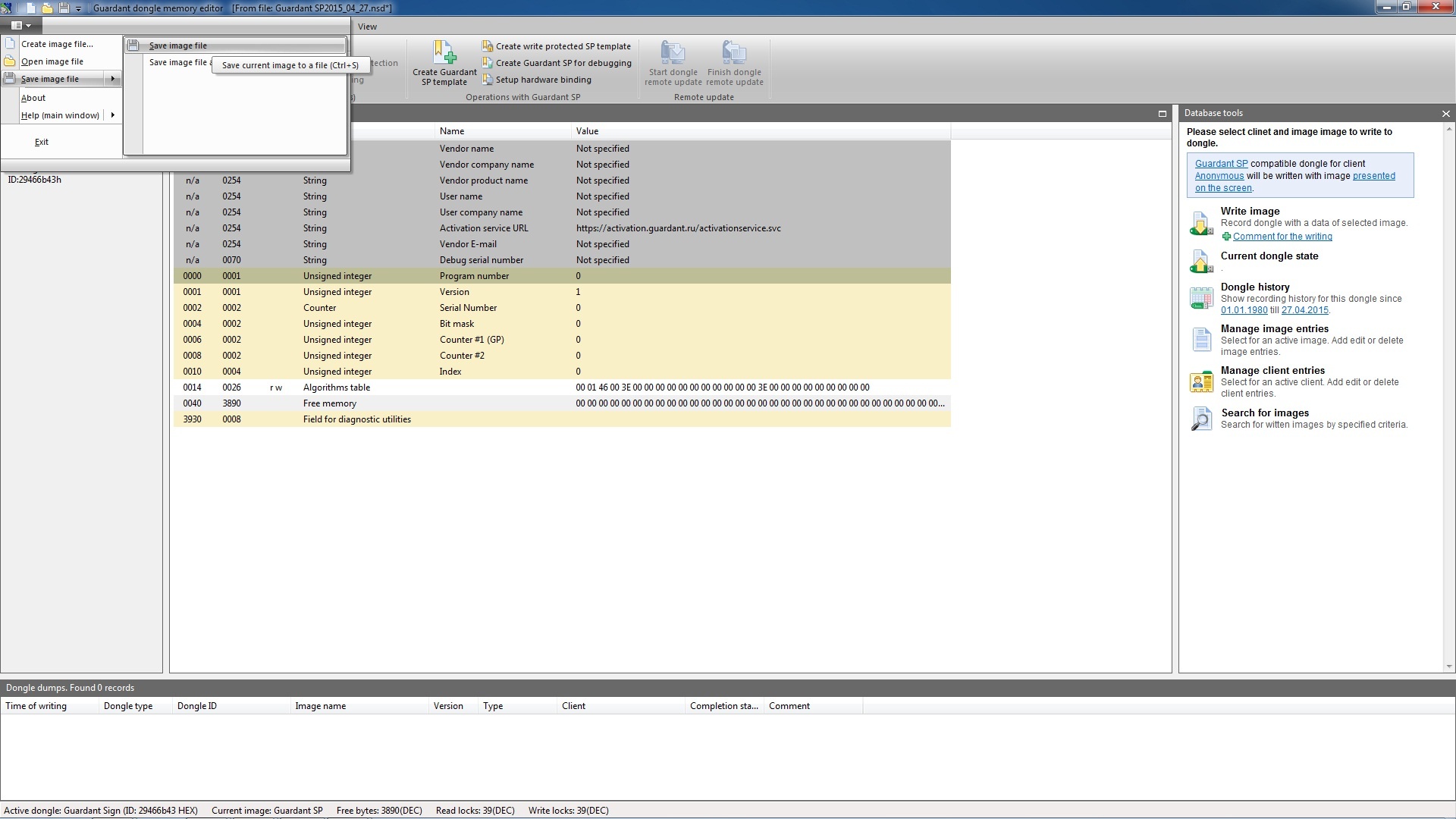The combination of all memory fields and their contents form the mask – structure or external image of dongle memory.
The mask makes the work with the dongle memory more intuitive and convenient. The mask can be stored in GrdUtil.exe database or in a special file (with *.nsd extension).
Dongle masks of various types differ from each other. Therefore it is important to make sure that a mask of a proper type is stored in a dongle.
Creating a mask
On the first launch of the utility a default mask is created automatically. Type of default mask depends on the type of the dongle currently connected to the port.
Select File | New in the menu to create a new mask. Select a dongle type to work with a specific dongle type in the dialog box that will appear:
Important information
GrdUtil.exe does not distinguish local and network dongles. Therefore if both types of dongles are supported, we recommend creating separate masks for programming local and network dongles.
After clicking [OK] a new mask is loaded into the Mask Editor and named default.nsd, which can be changed later. The mask name is shown in the header of the main window.
Saving the mask
1. Saving the mask in GrdUtil.exe database as a template
To save the mask in GrdUtil.exe database select Database | Save mask to database in the menu.
To save the mask in GrdUtil.exe database under a different name select Database | Save mask to database as… in the menu.
The database mode is a preferred operating mode with GrdUtil.exe. See Section GrdUtil.exe Database for more details.
2. Saving the mask in GrdUtil.exe database as a dump
In the database mode the mask, being saved into the dongle, is automatically saved in the database as a dump. Unlike the mask template the dump contains individual data for each dongle (for instance, random passwords to protected items or Trusted Remote Update passwords). The dump is further used for programming and updating the dongle memory. See Section GrdUtil.exe database for more details.
3. Saving the mask into file
Upon finishing the work with the current mask, GrdUtil.exe will ask for confirmation for saving it if the changes have not been previously saved:
An asterisk after the mask’s filename in the header of the main window of GrdUtil.exe indicates that the mask was changed and should be saved before closing:
To save mask in the current file select File | Save in the menu.
To save mask in a new file select File | Save as… in the menu. Enter new file name and click [Save] in the standard dialog box that will appear.
After saving the mask its name will appear in the header of GrdUtil.exe main window as well as indication that the mask was saved in a file:
Loading the mask
The mask edited during the last working session (or default.nsd mask) will be automatically loaded on GrdUtil.exe startup.
After loading the mask the Editor will show the list of fields and values stored in the fields at the moment of creation or the last mask modification.
1. Loading mask template from GrdUtil.exe database
To load a mask from the database into the Mask Editor doubleclick it in the mask list (dialog box Database tools, tab Masks) or select Database | Load mask from database menu item.
The database mode is a preferred operating mode with GrdUtil.exe. See Section GrdUtil.exe Database for more details.
2. Loading mask from a list of dumps
Any dump, i.e. mask written into dongle and containing unique data (random passwords, etc.) can be found in the database by selected parameters and loaded from the Dump dialog box into the Mask Editor.
Use one of the following ways of starting the operation to load a dump into the Mask Editor:
- Double-click the required line
- Right-click the required line and select Load from the popup menu.
See Section GrdUtil.exe Database for more details.
3. Loading mask from a file
To load a mask into the Mask Editor from a file select File | Open in the menu. A dialog box will appear. Select the required file from the list and click Open.
The selected file will be loaded into the Mask Editor.



